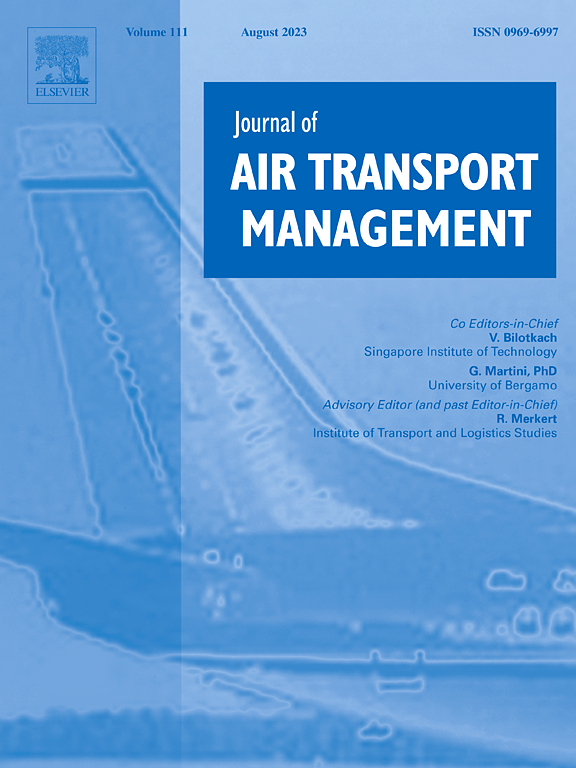Charge-discharge coupling strategy for dispatching problems with electric tractors at airports
IF 3.6
2区 工程技术
Q2 TRANSPORTATION
引用次数: 0
Abstract
Airports worldwide are actively promoting the transition of ground service vehicles from traditional fuel-powered vehicles to electric vehicles. The key to the successful implementation of this transition lies in the development of efficient electric vehicle dispatching models that comprehensively consider the charge-discharge processes of electric vehicles. However, due to the nonlinear characteristics of charge-discharge processes, finding precise solutions poses a significant challenge. Previous researchers have often used traditional energy consumption models and constant charging rates to simplify calculations, but this has resulted in inaccurate estimates of the remaining battery charge level. Furthermore, the lack of diverse pacing and charging strategies for airport ground service vehicles necessitates more adaptable solutions to enhance operational efficiency. To address these challenges, this paper uses airport electric tractors as a case study, develops an accurate model that takes into account the start-stop process and a piecewise linear charging function, designs an improved genetic algorithm that incorporates a greedy algorithm and an adaptive strategy, and develops charge-discharge coupling strategies for different configuration scenarios at Nanjing Lukou Airport to meet current and future needs. The research results indicate that compared to traditional genetic algorithms, the proposed improved genetic algorithm significantly enhances solution accuracy and convergence speed. Additionally, with the increase in flight scale, airports can appropriately enhance their charging strategies; airports with dispersed aircraft stands should devise higher pacing strategies compared to those with dense aircraft stands.
机场电动拖拉机调度问题的充放电耦合策略
世界各地的机场都在积极推动地面服务车辆从传统燃油车辆向电动车辆过渡。成功实现这一转变的关键在于开发综合考虑电动汽车充放电过程的高效电动汽车调度模型。然而,由于充放电过程的非线性特性,找到精确的解是一个重大的挑战。以前的研究人员经常使用传统的能量消耗模型和恒定的充电率来简化计算,但这导致了对电池剩余电量的不准确估计。此外,机场地面服务车辆缺乏多样化的起搏和收费策略,因此需要更具适应性的解决方案来提高运营效率。针对这些挑战,本文以机场电动拖拉机为例,建立了考虑启停过程和分段线性充电函数的精确模型,设计了一种结合贪心算法和自适应策略的改进遗传算法,并针对南京禄口机场不同配置场景制定了满足当前和未来需求的充放电耦合策略。研究结果表明,与传统遗传算法相比,改进的遗传算法显著提高了求解精度和收敛速度。此外,随着航班规模的增加,机场可以适当加强收费策略;机位分散的机场应该制定比机位密集的机场更高的节奏策略。
本文章由计算机程序翻译,如有差异,请以英文原文为准。
求助全文
约1分钟内获得全文
求助全文
来源期刊

Journal of Air Transport Management
TRANSPORTATION-
CiteScore
12.40
自引率
11.70%
发文量
97
期刊介绍:
The Journal of Air Transport Management (JATM) sets out to address, through high quality research articles and authoritative commentary, the major economic, management and policy issues facing the air transport industry today. It offers practitioners and academics an international and dynamic forum for analysis and discussion of these issues, linking research and practice and stimulating interaction between the two. The refereed papers in the journal cover all the major sectors of the industry (airlines, airports, air traffic management) as well as related areas such as tourism management and logistics. Papers are blind reviewed, normally by two referees, chosen for their specialist knowledge. The journal provides independent, original and rigorous analysis in the areas of: • Policy, regulation and law • Strategy • Operations • Marketing • Economics and finance • Sustainability
 求助内容:
求助内容: 应助结果提醒方式:
应助结果提醒方式:


